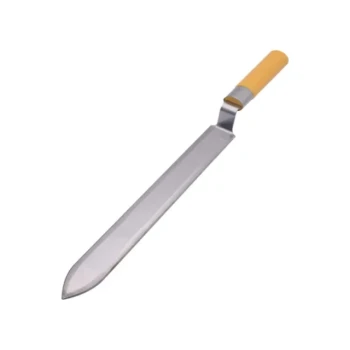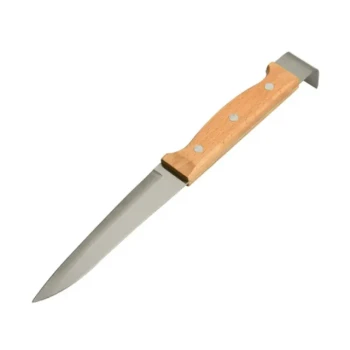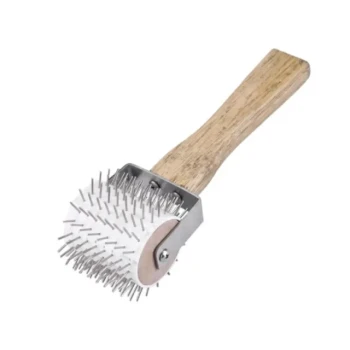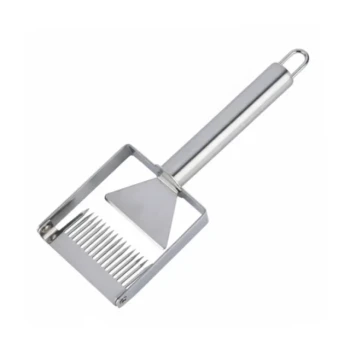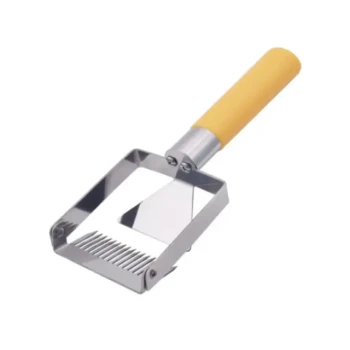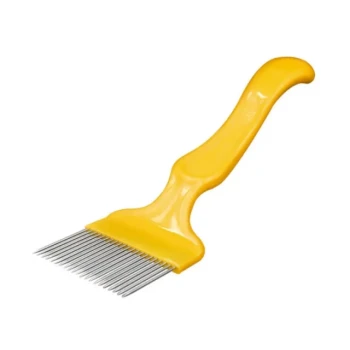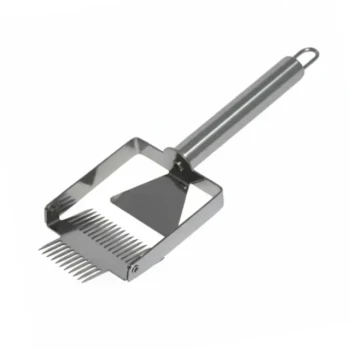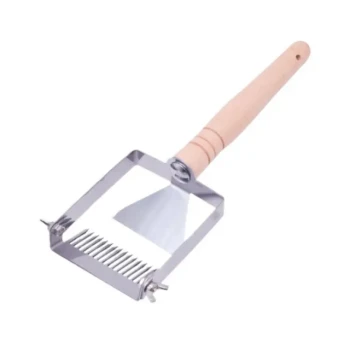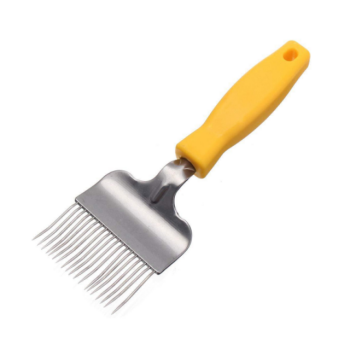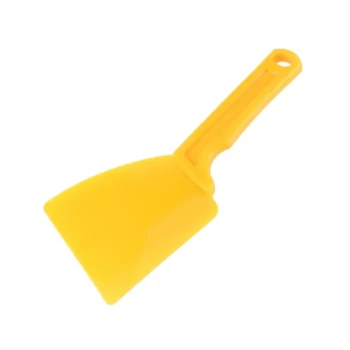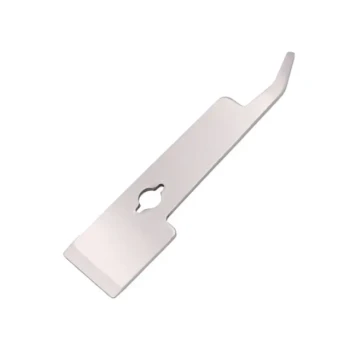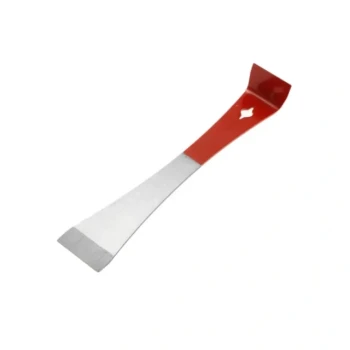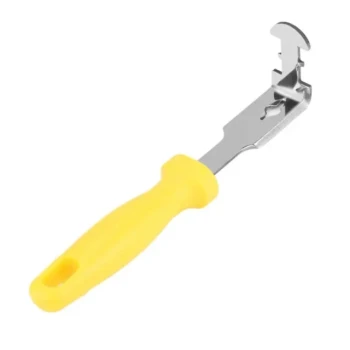To use a cold uncapping knife, you must employ quick and gentle sawing motions, almost like you're slicing bread. The key is to apply horizontal force, letting the knife glide just under the wax cappings, while using very little downward pressure to avoid cutting deep into the honeycomb and wasting honey.
While a cold knife is an effective, low-cost tool for small-scale beekeepers, understanding its limitations compared to a heated knife is crucial for choosing the right method for your specific harvesting goals.
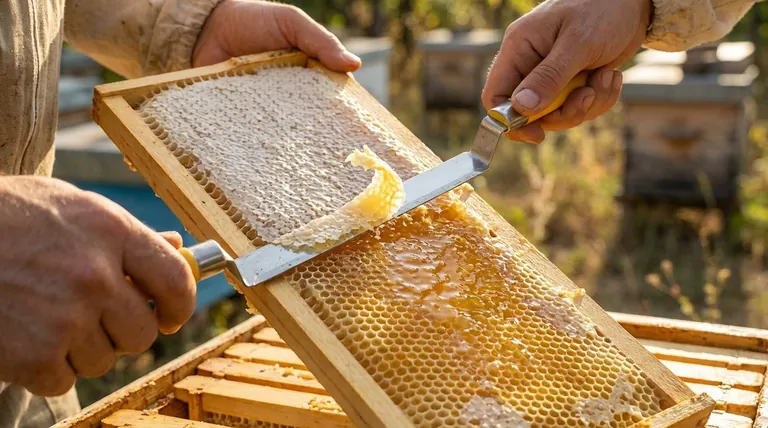
The Core Technique for a Cold Knife
Using a cold knife effectively is a skill that requires patience and the right technique. The goal is not to "cut" in the traditional sense, but to smoothly slice off the thin wax layer sealing the cells.
Master the Sawing Motion
The most critical part of the technique is a rapid, shallow sawing motion. You are not pushing the knife down through the comb. Instead, you are moving it back and forth horizontally across the frame's surface.
This motion allows the blade to sever the wax cappings cleanly without needing heat or brute force.
Aim for "Skin Deep"
Always aim to remove only the wax cappings. Slicing too deeply into the cells removes significant amounts of honey that will get trapped with the wax, reducing your overall yield.
Think of it as taking off only the very top layer of "skin" from the frame.
Use a Capping Scratcher for Low Spots
No frame is perfectly flat. A cold knife will inevitably miss the recessed areas or dips in the comb.
For these spots, do not try to dig in with the knife. Instead, use a capping scratcher or uncapping fork to puncture the remaining cappings, allowing the honey to flow out during extraction.
Is the Cold Knife the Right Tool for You?
The cold knife is one of several options, each with distinct advantages. The right choice depends entirely on the scale of your operation and your priorities.
The Case for the Cold Knife
The primary advantage of a cold knife is its simplicity and low cost. It requires no electricity and is an excellent starting point for hobbyists with only a few hives to process. It gives you a direct, tactile feel for the process.
The Case for the Electric Knife
An electric knife has a built-in heating element. This heat allows the blade to melt through the wax cappings with minimal effort, requiring far less of a sawing motion.
According to beekeeping suppliers, this method is significantly faster, provides a cleaner cut, and leaves less wax residue to filter from the honey later. It is the preferred tool for anyone processing a large number of frames.
Understanding the Trade-offs
Choosing a tool is about balancing efficiency, cost, and effort. There is no single "best" tool, only the best tool for a specific situation.
Cold Knife: Effort vs. Cost
The main trade-off with a cold knife is your time and physical effort in exchange for a very low initial investment. It is a slow, methodical process that can be fatiguing when uncapping many frames.
Electric Knife: Speed vs. Investment
The electric knife represents a higher upfront cost and requires a power source. In return, it offers a dramatic increase in speed and efficiency, making the uncapping process far less of a bottleneck during your harvest.
Making the Right Choice for Your Goal
Select your tool based on the scale of your beekeeping operation and how you value your time.
- If your primary focus is keeping costs low with one or two hives: A cold knife, paired with a capping scratcher, is a perfectly suitable and economical choice.
- If your primary focus is processing many frames efficiently: Investing in an electric uncapping knife will save you a significant amount of time and physical labor.
- If your primary focus is maximizing honey yield: Your technique matters more than your tool. Whether hot or cold, a shallow cut that only removes the cappings is essential to prevent honey loss.
Choosing the right uncapping tool is the first step toward a smooth and rewarding honey harvest.
Summary Table:
| Tool | Best For | Key Technique | Primary Advantage |
|---|---|---|---|
| Cold Knife | Hobbyists, 1-2 hives | Shallow, rapid sawing motion | Low cost, simplicity |
| Electric Knife | Larger-scale operations | Heated blade glides through wax | Speed, efficiency, cleaner cut |
Ready to optimize your honey harvest? Whether you're a hobbyist or a commercial apiary, choosing the right tool is key to efficiency and yield. HONESTBEE supplies professional beekeeping supplies and equipment, including uncapping knives, to commercial apiaries and distributors. Let us help you select the perfect tools for your operation's scale and goals.
Contact our experts today for wholesale pricing and personalized advice!
Visual Guide
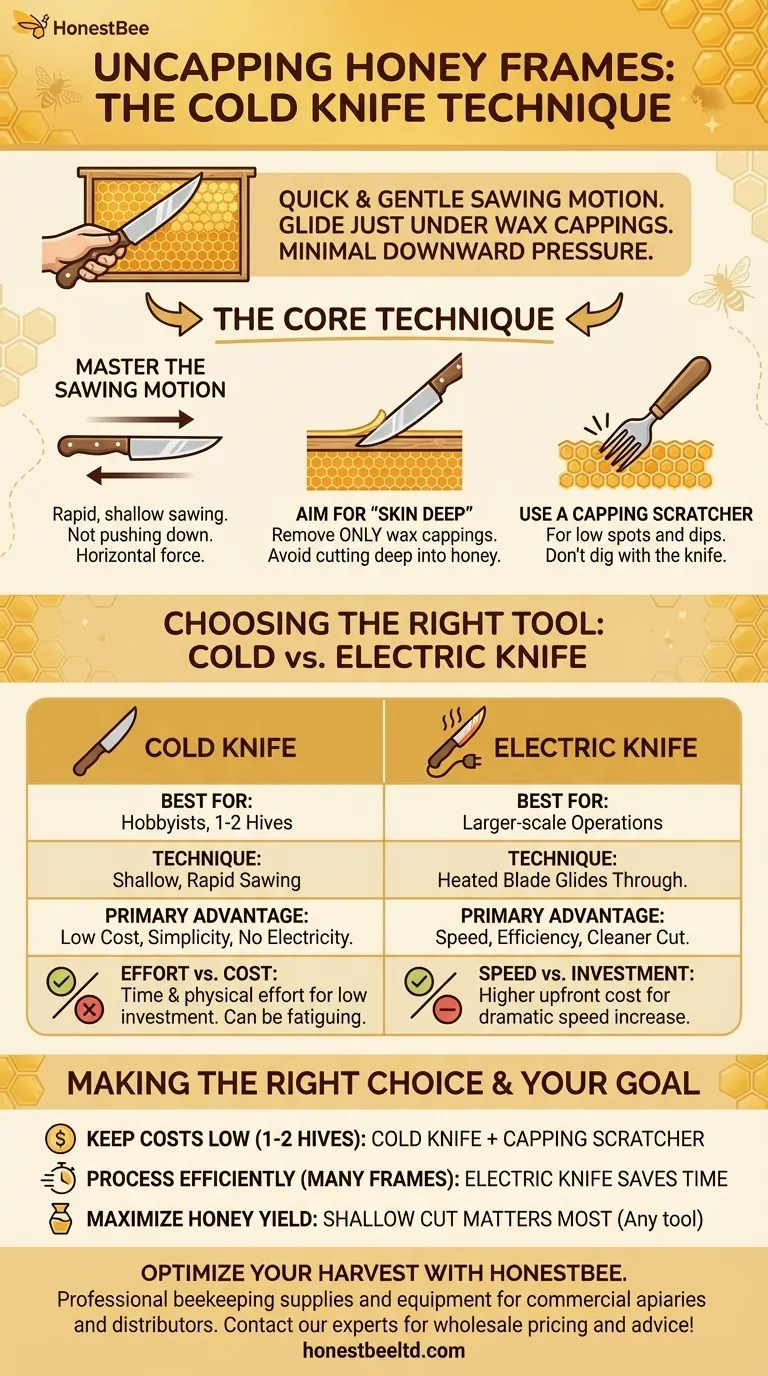
Related Products
- Professional Stainless Steel Double-Sided Honey Uncapping Knife
- Professional Compact Multi-Function Uncapping Knife for Beekeeping
- Professional Honey Uncapping Roller for Efficient Harvesting
- All-Stainless Steel Pivoting Honey Uncapping Fork for Beekeeping
- Stainless Steel Pivoting Honey Uncapping Fork with Plastic Handle
People Also Ask
- What are the advantages of an uncapping fork? Achieve Precision Honey Harvesting for Your Apiary
- What is the recommended practice when using plain knives for uncapping? Master the Two-Knife Method for a Perfect Harvest
- What is an uncapping plane, and how does it differ from an electric knife? Precision vs. Speed for Beekeepers
- Why do you uncap honey? Unlock Your Harvest with Efficient Uncapping
- How do you cut capping off honey from frames? A Guide to Efficient Uncapping Methods
